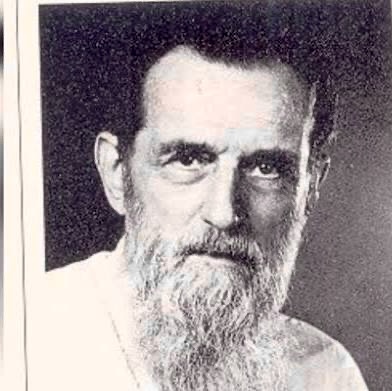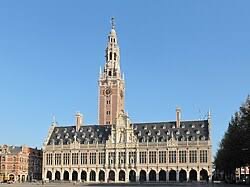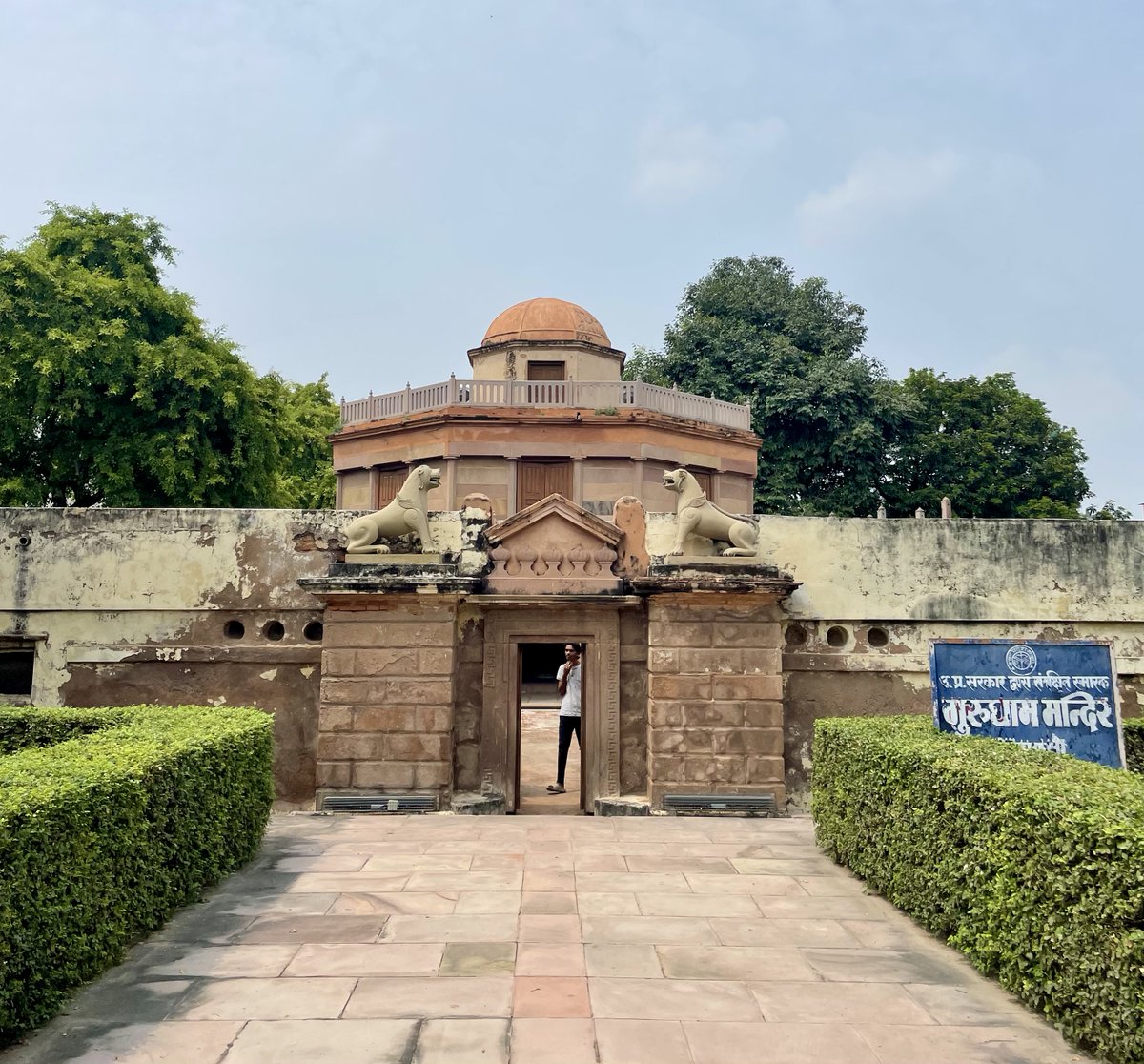
Drifting through Indian history, books, words, music, travel. Information sharing.
How to get URL link on X (Twitter) App


 2/ Born in 1909 in a Belgian village, Bulcke obtained a civil engg degree from University of Leuven. He decided to devote his life to Jesus & moved to India. A 5 year stint in Gumla (Jharkhand) as a mathematics teacher followed, during which he fell in love with Sanskrit & Hindi.
2/ Born in 1909 in a Belgian village, Bulcke obtained a civil engg degree from University of Leuven. He decided to devote his life to Jesus & moved to India. A 5 year stint in Gumla (Jharkhand) as a mathematics teacher followed, during which he fell in love with Sanskrit & Hindi. 

 2/ The preceding decades had set the stage. Kabir the weaver & Ravidas the leatherworker shook orthodoxy with sharp dohas on Nirguna (formless) bhakti—songs that cut through caste & ritual to reach a direct love of the divine.
2/ The preceding decades had set the stage. Kabir the weaver & Ravidas the leatherworker shook orthodoxy with sharp dohas on Nirguna (formless) bhakti—songs that cut through caste & ritual to reach a direct love of the divine. 


 2/ Even today she’s on screen and in speech: films, a hit TV series, folk proverbs, and a Benares post office bear her name. Rani Bhabani blends piety, generosity, sharp business sense—and sheer charisma.
2/ Even today she’s on screen and in speech: films, a hit TV series, folk proverbs, and a Benares post office bear her name. Rani Bhabani blends piety, generosity, sharp business sense—and sheer charisma. 


 2/ He was born Shivaram near Vizianagaram to a religious couple. His mother Vidyavati was a strong influence on him; he would join her when she would meditate. Her passing away impacted him deeply and after her cremation he spent 20 years at the cremation ground in meditation.
2/ He was born Shivaram near Vizianagaram to a religious couple. His mother Vidyavati was a strong influence on him; he would join her when she would meditate. Her passing away impacted him deeply and after her cremation he spent 20 years at the cremation ground in meditation.

 2/ He was born in Kotalapada village of Faridpur district, now in Bangladesh, in 1540. Still young, he moved to Nabadwip in Nadia district; a major center for Sanskrit learning. Nabadwip, birthplace of Sri Chaitanya Mahaprabhu (in pic) who was a strong influence on Vaishnavism.
2/ He was born in Kotalapada village of Faridpur district, now in Bangladesh, in 1540. Still young, he moved to Nabadwip in Nadia district; a major center for Sanskrit learning. Nabadwip, birthplace of Sri Chaitanya Mahaprabhu (in pic) who was a strong influence on Vaishnavism. 

 2/ He was born Shyamacharan Lahiri in 1828 in Ghurni village, Bengal; the eldest child of Gourmohan Lahiri, & Muktkeshi Devi. His mother died when Shyamacharan was 5 years old. The distraught Gourmohan left for Varanasi with his family.
2/ He was born Shyamacharan Lahiri in 1828 in Ghurni village, Bengal; the eldest child of Gourmohan Lahiri, & Muktkeshi Devi. His mother died when Shyamacharan was 5 years old. The distraught Gourmohan left for Varanasi with his family.

 2/ Galanos was born in Athens, then a small town under Ottoman rule. He studied philosophy. Latin, oratory & eccelsistical music at a Seminary, & went to Constantinople to teach resident Greek children. A meeting with a merchant would change his life forever.
2/ Galanos was born in Athens, then a small town under Ottoman rule. He studied philosophy. Latin, oratory & eccelsistical music at a Seminary, & went to Constantinople to teach resident Greek children. A meeting with a merchant would change his life forever.

 2/ Mahesh Sarkar’s grandfather, Balaram Sarkar, migrated from Burdwan dist, Bengal, to Varanasi in the 1700’s. He acquired property close to the Ganges river in the Madanpura area.
2/ Mahesh Sarkar’s grandfather, Balaram Sarkar, migrated from Burdwan dist, Bengal, to Varanasi in the 1700’s. He acquired property close to the Ganges river in the Madanpura area.

 2/ It was built by the noted zamindar, Maharaja Jaynarayan Ghoshal of Bhukailash at Khidderpur in Kolkata in 1827. Ghoshal had a serious malady & moved to Varanasi seeking favourable climate. His was an interesting personality, his story in detail later.
2/ It was built by the noted zamindar, Maharaja Jaynarayan Ghoshal of Bhukailash at Khidderpur in Kolkata in 1827. Ghoshal had a serious malady & moved to Varanasi seeking favourable climate. His was an interesting personality, his story in detail later.

 2/ This is no ordinary book. It was the first dictionary- actually an encyclopedia- in Sanskrit. It was a compilation of words from the shastras in Sanskrit covering a whole spectrum of knowledge- Jyotish, vastu, neetishastra, natyashastra & alankarshastra to name just a few.
2/ This is no ordinary book. It was the first dictionary- actually an encyclopedia- in Sanskrit. It was a compilation of words from the shastras in Sanskrit covering a whole spectrum of knowledge- Jyotish, vastu, neetishastra, natyashastra & alankarshastra to name just a few. 

 The Mitra family, owner of Bengali Deodhi is now in its 10th generation in Varanasi. They have been performing the Durga Puja ever since 1773. I met gen 8, 9, 10 at the Deodhi last morning, all traditionally dressed, and busy with the proceedings.
The Mitra family, owner of Bengali Deodhi is now in its 10th generation in Varanasi. They have been performing the Durga Puja ever since 1773. I met gen 8, 9, 10 at the Deodhi last morning, all traditionally dressed, and busy with the proceedings. 

 2/ He was born in a poor family. His father, an indigo planter in India, lost all his money when we returned to England. He architecture study was cut short, due to poor eyesight. He finally found a job as an assay master in East India Company mint in Calcutta.
2/ He was born in a poor family. His father, an indigo planter in India, lost all his money when we returned to England. He architecture study was cut short, due to poor eyesight. He finally found a job as an assay master in East India Company mint in Calcutta. 

 2/ Marriage at home? Cough up biyahdani (बियाह दानी) to the zamindar. Going rate: Girl’s marriage: 1 rupee and 4 annas Boy’s: Ten annas. A widow remarriage, if and when it happened, attracted the levy sagaura (सगौरा) , a sum of Rupees Five.
2/ Marriage at home? Cough up biyahdani (बियाह दानी) to the zamindar. Going rate: Girl’s marriage: 1 rupee and 4 annas Boy’s: Ten annas. A widow remarriage, if and when it happened, attracted the levy sagaura (सगौरा) , a sum of Rupees Five.

 2/ Chhatrapati or his selected person commanded the army. Government departments like revenue, customs, justice, etc were headed by official selected & supervised by the king. They were paid from the state treasury. While it sounds simple & obvious, it was to change later.
2/ Chhatrapati or his selected person commanded the army. Government departments like revenue, customs, justice, etc were headed by official selected & supervised by the king. They were paid from the state treasury. While it sounds simple & obvious, it was to change later.

 2/ Let us look at the decades preceding 1757 when Bengal was a focus of many interested parties; a period was just right for the power seekers to stake their claims. Which they did. This thread tells their story in brief.
2/ Let us look at the decades preceding 1757 when Bengal was a focus of many interested parties; a period was just right for the power seekers to stake their claims. Which they did. This thread tells their story in brief.

 2/ An urbanizing Vadnagar had to be protected further. There was already a mud rampart around the city. In the early part of this period, it was veneered with burnt bricks in certain areas. We will see evidence of why it was becoming rich a little later in this thread.
2/ An urbanizing Vadnagar had to be protected further. There was already a mud rampart around the city. In the early part of this period, it was veneered with burnt bricks in certain areas. We will see evidence of why it was becoming rich a little later in this thread. 

 2/ During the closing centuries of the BCE era and the early years of the first millennium CE, there was a series of interconnected upheavals and movements in Central Asia. This would have an impact on India, particularly North and West India.
2/ During the closing centuries of the BCE era and the early years of the first millennium CE, there was a series of interconnected upheavals and movements in Central Asia. This would have an impact on India, particularly North and West India. 

 2/ A team of archaeologists of ASI, led by Dr Abhijit Ambekar, Superintending Archaeologist, noticed a shrine- a shrine to Goddess Sikotara Mata- during their excavation work. What was so significant about this?
2/ A team of archaeologists of ASI, led by Dr Abhijit Ambekar, Superintending Archaeologist, noticed a shrine- a shrine to Goddess Sikotara Mata- during their excavation work. What was so significant about this? 

 2/ A rampart is a protection (defense) structure. Protection of the inhabitants and the settlement’s prosperity. What caused the prosperity? This period (200 BCE to 100 CE) was a “happening” time. Archaeological findings of tell the story.
2/ A rampart is a protection (defense) structure. Protection of the inhabitants and the settlement’s prosperity. What caused the prosperity? This period (200 BCE to 100 CE) was a “happening” time. Archaeological findings of tell the story. 

 2/ Let us start with a lake, Sharmishtha Lake, in the North of the town. The town is perched on the ancient remains where all the action has been, historically. The settlement of the town, just south of the lake, got its water for drinking, agriculture etc from the lake.
2/ Let us start with a lake, Sharmishtha Lake, in the North of the town. The town is perched on the ancient remains where all the action has been, historically. The settlement of the town, just south of the lake, got its water for drinking, agriculture etc from the lake. 

 2/ You will find remains here of Sakas (Indo-Scythians) or the Western Satraps, Maitrakas came after the demise of the Gupta empire, the Solankis of Gujarat followed by Sultans and the Mughal Empire and finally the Gaekwads in the 18th/19th century and then the modern age.
2/ You will find remains here of Sakas (Indo-Scythians) or the Western Satraps, Maitrakas came after the demise of the Gupta empire, the Solankis of Gujarat followed by Sultans and the Mughal Empire and finally the Gaekwads in the 18th/19th century and then the modern age. 